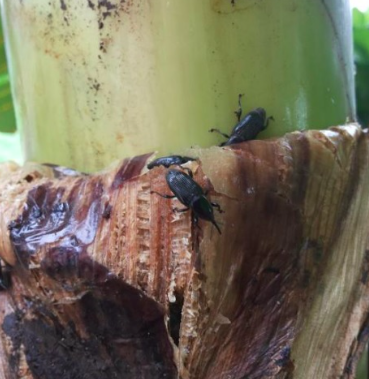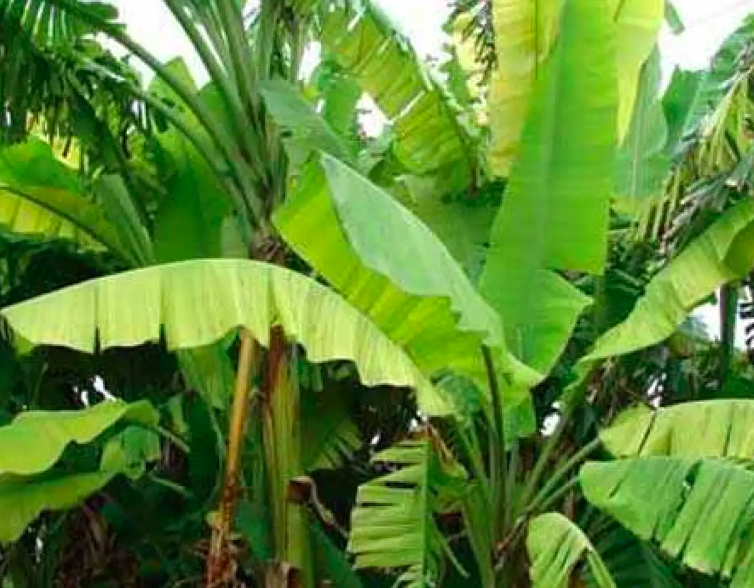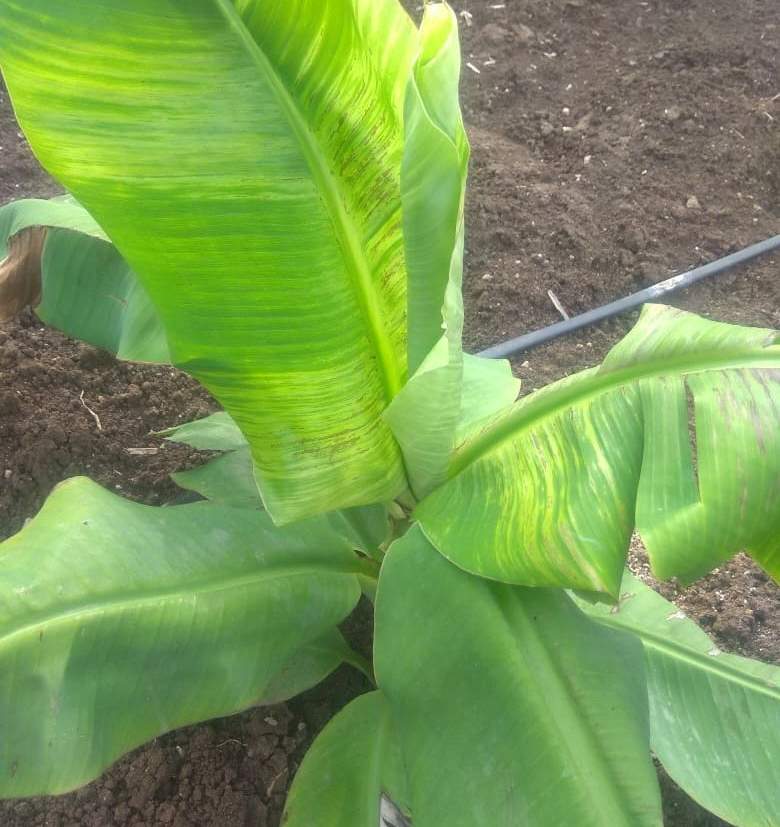Identification of pest
- Eggs – are laid at random on cut ends of pseudostem, yellowish-white, cylindrical in shape
- Grub – Apodous, creamy white with dark brown head.
- Pupa – pale yellow colour, fibrous cocoon formed inside the tunneling on the periphery
- Adult – Robust, reddish brown and black weevil.
Symptoms of damage
- Grub bore into pseudostem making tunnels
- Cutting holes on outer surface
- Exudation of plant sap – initial symptom
- Blackened mass comes out from the bore hole
- Tunneled part decomposes and pseudostem becomes weak
- Wilting of the plant.
Management
- Remove dried leaves periodically and keep the field clean
- Prune the side suckers every month
- Use healthy and pest free suckers to check the pest incidence
- Do not dump infested materials into manure pit
- Uproot infested trees, chop into pieces and burn
- Use longitudinally split pseudostem trap at 65/ha
- Spray monocrotophos 36 SL @ 0.036%
- Dilute 50 ml of monocrotophos 36 SL with 500 ml of water and inject 4ml in the pseudostem
Note
- 2ml at 45 cm from ground level; another 2m at 150 cm from ground level
After a few weeks of much deserved holiday, Mr Mitesh Patel, Anand, Gujarat, India, walked to his farm one morning and froze in his tracks…right before him was his formerly, completely healthy plantation now showing signs of distress. ‘What could possibly have gone wrong?!’, he wondered. All of the banana trees in Patel’s farm had dull, floppy, yellowing foliage. Some of the trees had an oozing, gummy exudation, and the emerging peduncles (which every banana farmer counts as money-in-the-bag) had now started decaying. Upon closer inspection, he could see small, pin-head size holes on the lower leaf sheath of some of the trees.
Our technical team members soon arrived and upon cutting down one of the trees, caught the culprit red handed. The banana pseudostem weevil, a small black insect which feeds exclusively on banana trees (monophagous pest) had invited itself to Patel’s fields, and destroyed over 8 months of hard work and a big sum of money.
Weevil infestations spread like fire through banana fields as the adult insect is a strong flier. Banana Weevils lay eggs on the outermost leaves of the banana tree and the emerging young grubs burrow circular tunnels in the pseudostem. Affected Banana trees will not bear fruit or produce small weak bunches which are easily blown down by the wind.
Ideal Treatment For Banana Farms Affected By Banana Pseudostem Weevil
( Odoiporus longicollis )
Such plantations need to be rescued promptly by removing all the dry and infected leaves. Side suckers should be promptly removed and all heavily infested stems should be removed from the field and destroyed.
The leaf axils then need to be drenched with Carbaryl 4 gm per lit of water, which needs to be repeated in 15 days.
Disk on stump traps, pheromone traps and sticky traps are some common ways to organically control these pests.
Crop rotation, especially in areas known to be affected by weevils, will reduce incidence over time.
Field Sanitation is important for controlling pests naturally. Before planting, many farmers use 50 grams of neem power or castor cakes per pit, during plantation as a natural deterrent. After harvest, remaining banana stumps should be removed and disposed off by burning as they serve as weevil refuge and breeding sites.
” The leaf axils need to be drenched with Carbaryl 4 gm per lit of water, which needs to be repeated in 15 days.”




